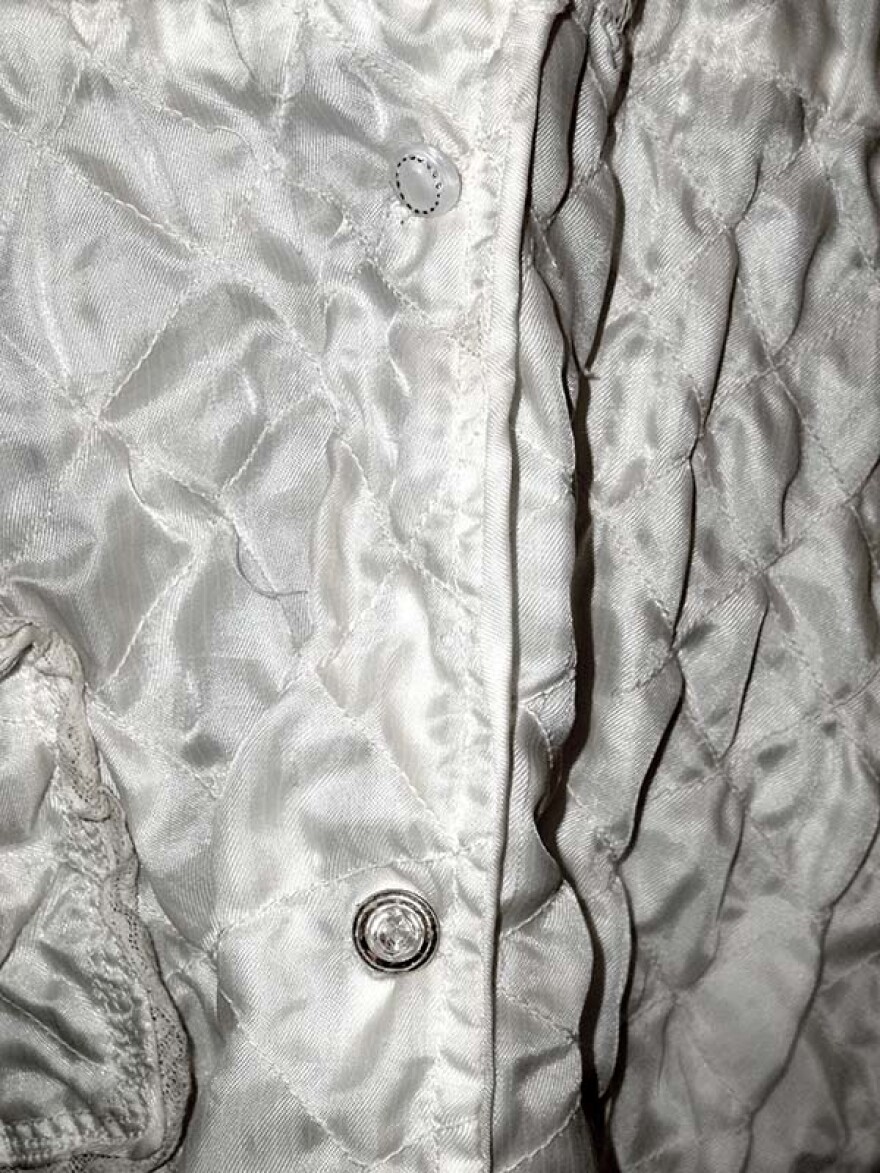On Christmas Eve, 1959, in a small apartment in Cleveland, Ohio, the foot pedal on Mary JuratovacGansen’s old treadle sewing machine was steadily being rocked forward and back, driving the belt that made the needle go up and down into the night. Some women would get fancy electric sewing machines that Christmas. Each of Mary’s two young daughters would be gifted a priceless heirloom made out a WWII parachute.
Fifty-four years later, the story of the Christmas robes made out of the parachute is told by Mary’s daughters, Judy Dynnick, who has passed away and Marilyn Williams of Kalamazoo.
When Dynnik was about eight years old, a big box arrived at their house. When it was opened, Dynnik kept pulling and pulling on the fabric that never seemed to end. When she learned it was a parachute sent to them by an uncle who was at Pearl Harbor in WWII, Dynnik asked her mother what they were going to do with it. That year, Mrs. Gansen did not have money for Christmas presents for her daughters.
“It was important to her to try to always make us something new at Christmas time,” says Dynnik.
“That was the only material she had to work with,” says Williams.

So, she cut the parachute into pieces. Dynnick remembers her mother going to work and then, coming home to sew on the robes into the night, so they would be finished for Christmas morning.
“Her sewing machine was only a few feet down the hall and I could hear the whirring,” says Williams.
Mrs. Gansen’s was 100 percent Croatian. Her parents had come from Zagreb. Marilyn believes her mother probably started sewing as a young girl. There was always a sewing machine in the house.
“She was either making clothing for my sister and I or repairing other people’s clothing,” says Williams.
Mary was working so hard to get them finished. Dynnick remebers telling her mother that she didn’t have to get them done before Christmas.
“The robe was machine quilted,” Williams says. “Probably the softest material I’ve ever felt. She adorned it with lace around the collar and around the pocket and also around the edges of the sleeves. It was a beautiful thing she did out of love.”
About 25 years ago, Williams gave her robe to her daughter Angela. Now, it is passed to Samantha who is four and Olivia who is three.
“I would hope that my granddaughters could possibly know something about my mother, her talents, her kindness and the real meaning of Christmas,” says Williams. “I want them to understand the essence of Christmas. Giving from the heart, not from the checkbook.”


